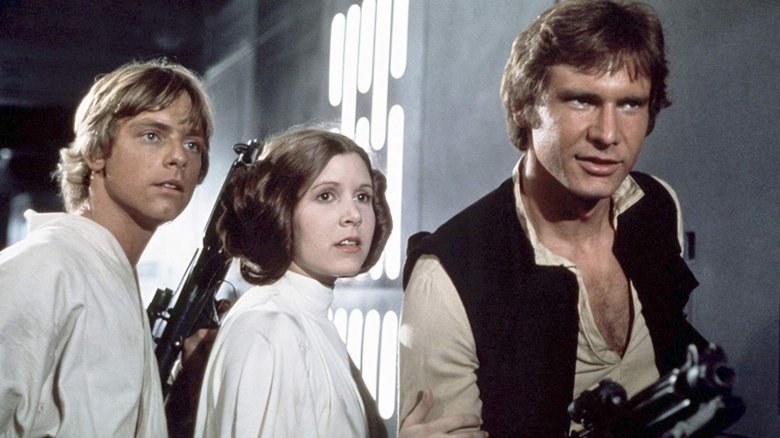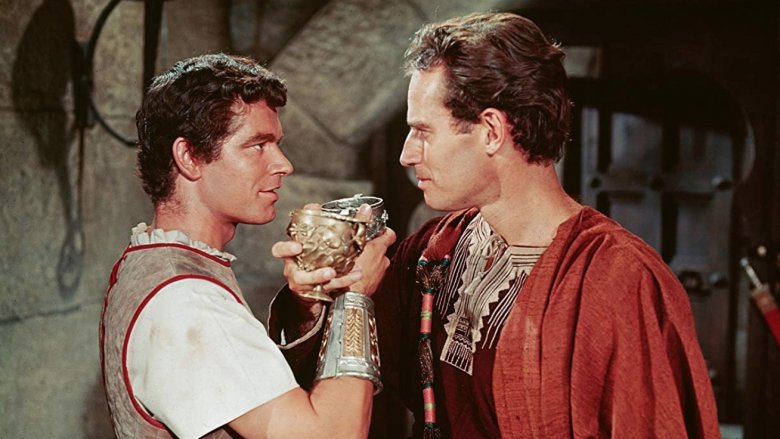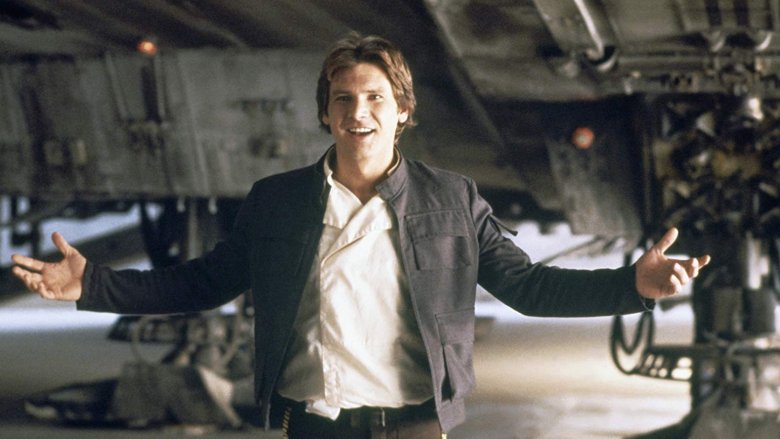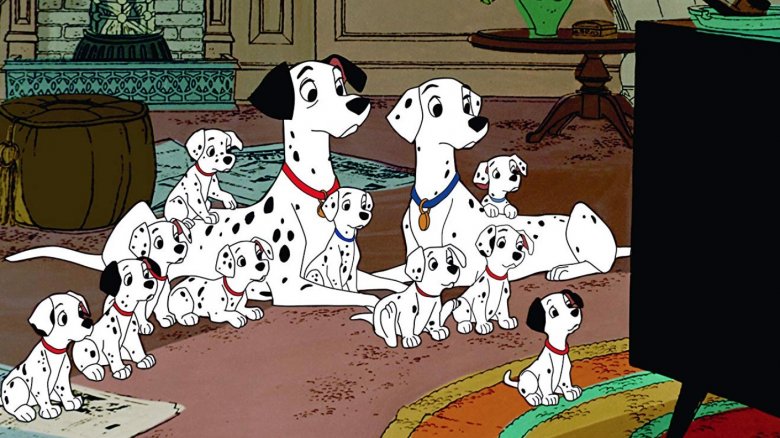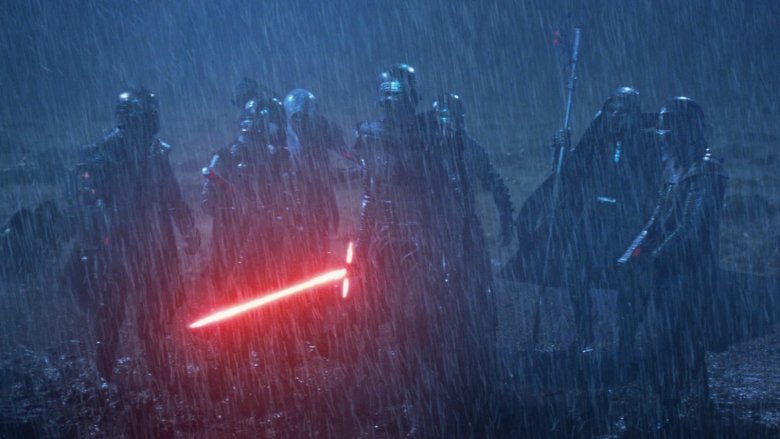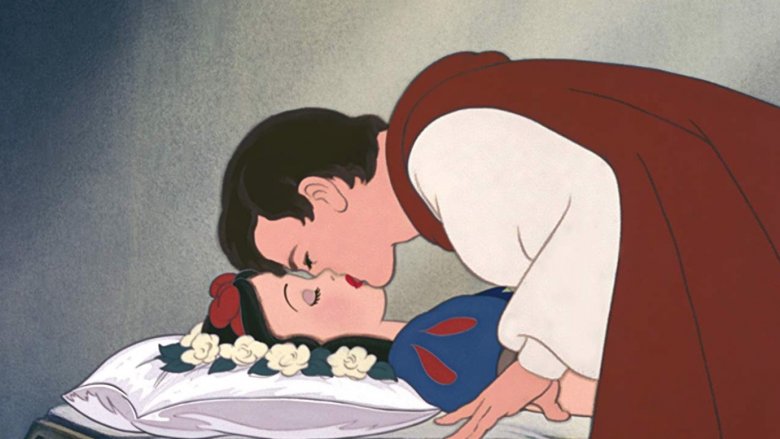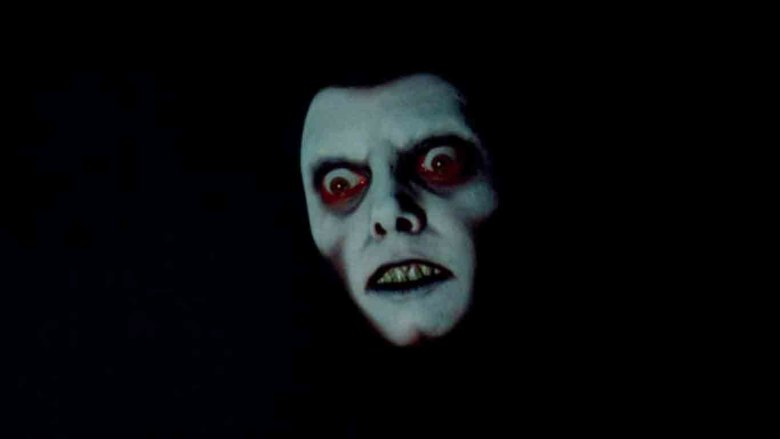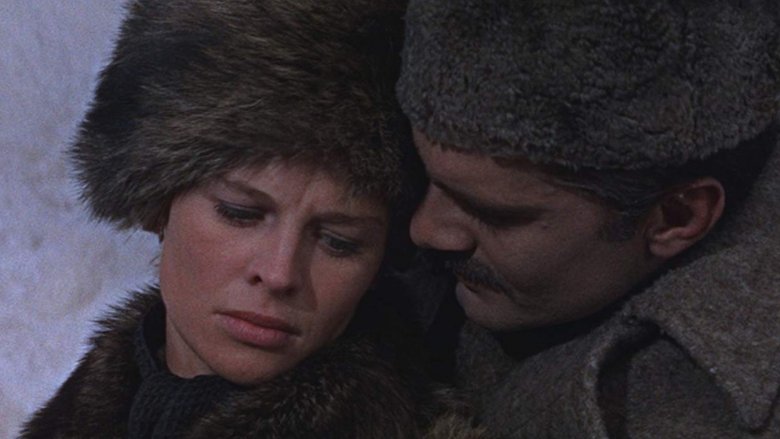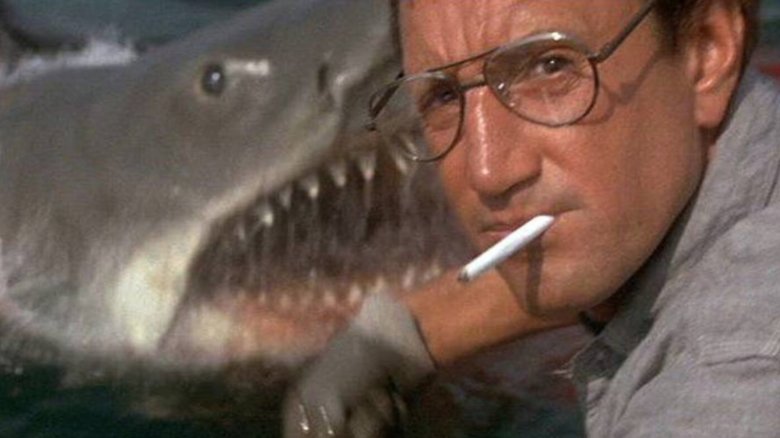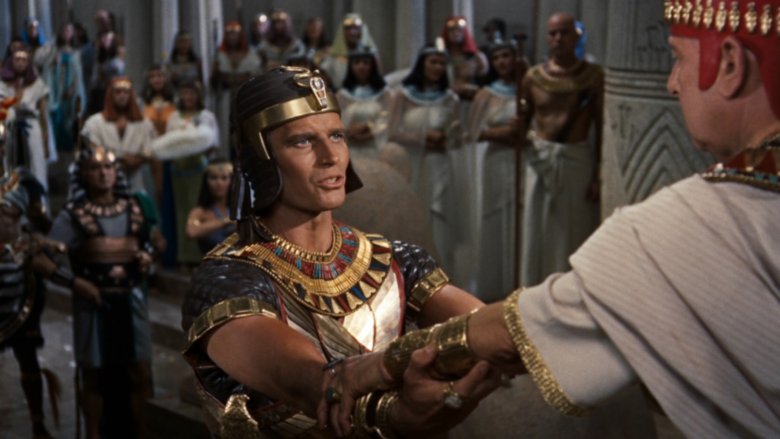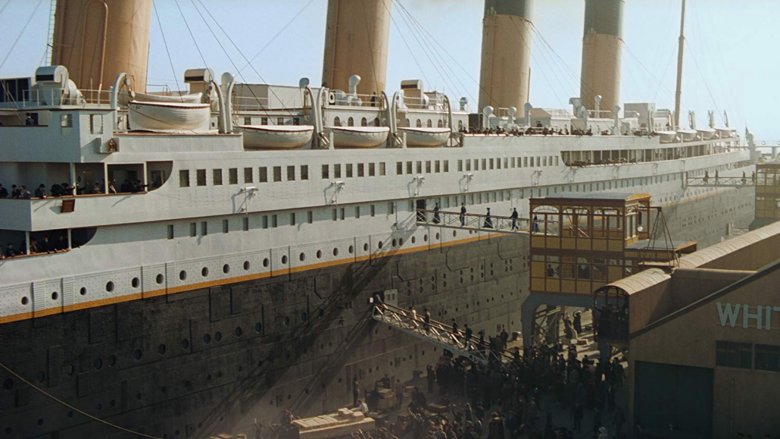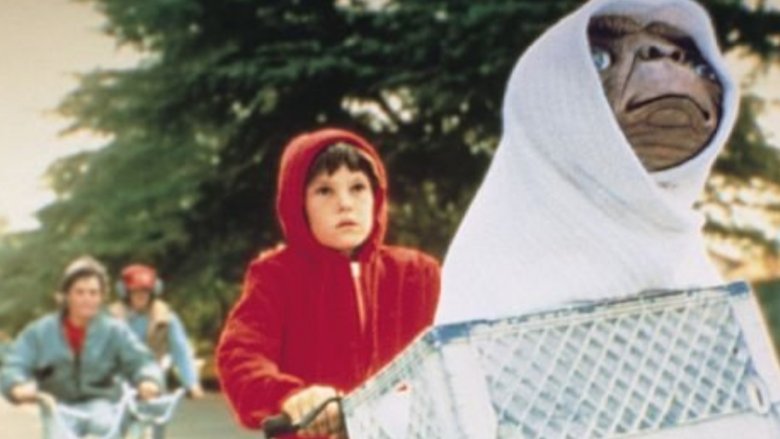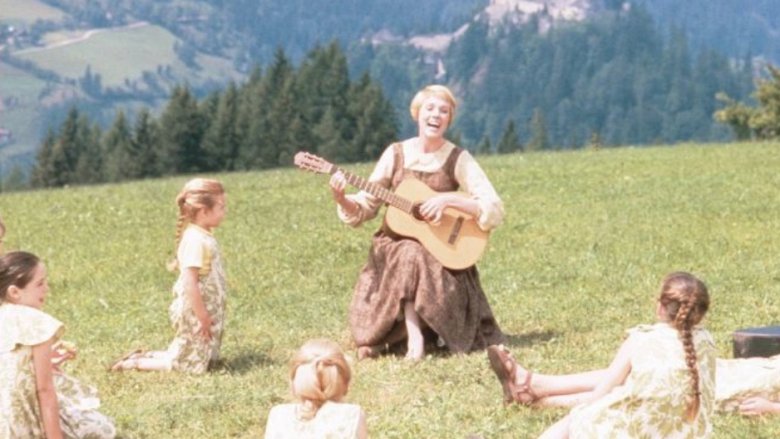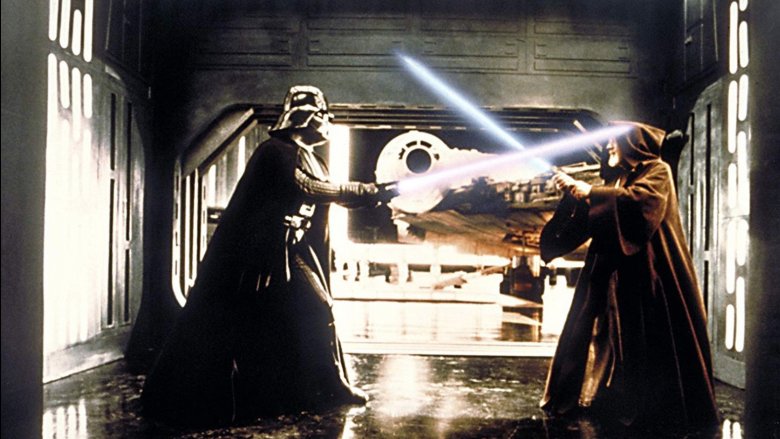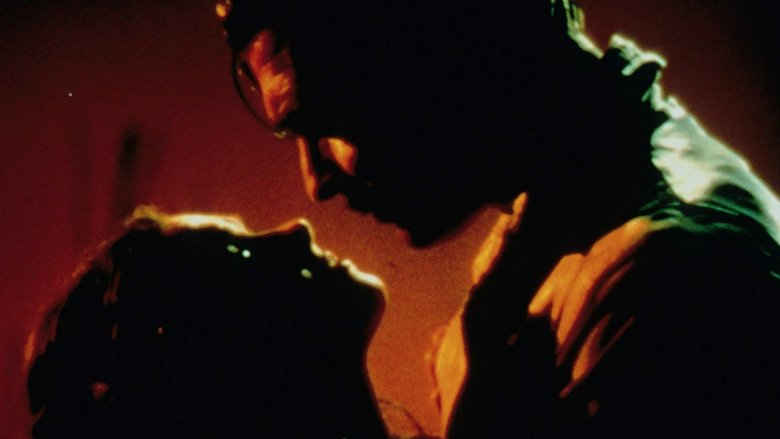Movies That Sold More Tickets Than Avengers: Endgame
Avengers: Endgame is the highest-grossing movie of all time. After its earth-shattering $1.2 billion global bow that obliterated opening weekend records, it was only a matter of when —and it conquered previous record-holder Avatar's historic 10-year reign in less than 100 days. While Avengers: Endgame is in second place domestically behind Star Wars: The Force Awakens, its total worldwide gross is unmatched.
Yet while Avengers: Endgame has made more than any movie ever, it hasn't sold the most tickets — in fact, it isn't even in the top 15. Of course, there are caveats with any "biggest movie ever" discussion. The moviegoing world isn't the same as it was 80 years ago — or even eight months ago. But the fact remains: a lot of movies have sold a lot more tickets than Avengers: Endgame. Sure they didn't have to compete against multiple streaming services, and most also had several re-releases. On the flip side, most of these were also released when tickets cost significantly less. The numbers don't lie, and some entries may surprise you. Here's a look back at the movies that sold more tickets than Avengers: Endgame.
Ben-Hur made epic money
No, we aren't talking about the infamous 2016 bomb that lost its chariot wheels right out of the gate and lost Paramount a mind-numbing $120 million. Younger filmgoers may not have known it, but Ben-Hur was based on a 1959 multimillion-dollar epic that was one of the biggest hits of all time, showing just how much times have changed in the past 60 years.
Ben-Hur starred Charlton Heston, Hollywood's go-to epic actor, as Moses and was directed by one of old Hollywood's most bankable hitmakers of the era, William Wyler. The Academy-Award winning director of The Best Years Of Our Lives, Roman Holiday, Jezebel and numerous other classics certainly had his work cut out for him. With a then-astronomical budget of $15 million, Ben-Hur was a massive gamble by its studio MGM, which was hoping that Ben-Hur could pull it out of impending bankruptcy. If Ben-Hur was their Hail Mary pass, it connected. Fortunately for the studio, the epic made $74 million domestically (or $883 million today) and $147 million worldwide. All told, Ben-Hur saved MGM from bankruptcy and became acknowledged as a classic that's still being talked about today.
The Empire Strikes Back... at the box office
In 1977, Star Wars (a.k.a. Episode IV: A New Hope for those born after 2000) conquered the box office and changed the movie landscape. Naturally, its first sequel was highly anticipated — so much so that 1980's The Empire Strikes Back opened to nearly $5 million in just 126 theaters during its initial limited run, and $10 million once it expanded to 823 theaters. Even today, with our multiplex culture, those numbers would be impressive if adjusted for inflation; in 1980, they were in a galaxy far, far away. All told, Empire's initial run earned a little more than $209 million, but it wasn't finished: Empire was re-released in 1981 and 1982, earning about $13 million each time, then re-released again as a Special Edition in 1997, earning another $67 million. All told, The Empire Strikes Back has earned $290 million domestically and $538 million worldwide. Adjusted for inflation, its domestic gross now stands at $884 million, or nearly $30 million more than Avengers: Endgame.
101 Dalmatians' box office is spotless
Everyone loves dogs, Disney, and cartoons, so it's no surprise that 1961's 101 Dalmatians, which combines all three, was a huge moneymaker for the Mouse House. The film is a classic from the tail end of Disney's golden era, with a quirky story, some catchy tunes, and an iconic villain in Cruella de Vil (if you're going to name your kid Cruella, she's gotta be a villain). 101 Dalmatians was a big hit in its initial run, earning $14 million. But the film had a connection with audiences, and made most of its change in subsequent re-releases, including two huge rereleases in 1985 and 1991. In fact, the 1991 release, 30 years after the film was first released, made $60 million. So clearly the spotted pups had more staying power than the movie's initial release would have suggested. No wonder it inspired a live-action remake in 1996 — as well as the 2000 sequel, 102 Dalmatians — long before remaking animated classics was Disney's thing. All told, 101 Dalmatians has made $144 million domestically, or just over $900 million when adjusted for inflation. Like they say, every dog has its day. Hopefully they get royalties too.
The force was with The Force Awakens
Star Wars: The Force Awakens is the seventh film in the extremely popular franchise and the first sequel to the original series in more than 30 years, bringing Harrison Ford, Carrie Fisher, and Mark Hamill back to the roles that made them famous. The Force Awakens was the first Star Wars film to open during the holiday season, an unexpected change of pace for the franchise that practically invented the summer movie season. It turned out to be a stroke of genius.
The Force Awakens opened to a record-breaking opening weekend of $247 million, but its true accomplishment came in the weeks that followed. After opening like a summer blockbuster, it played like a holiday hit, continuing to earn millions in the weeks following. By the end of its historic run, Star Wars: The Force Awakens had earned $936 million domestically, more than Avengers: Infinity War and Avengers: Endgame, the two films that beat its opening weekend record. Adjusted for inflation, The Force Awakens would have made $974 million today.
Snow White's box office was pure magic
Disney's had a remarkable run of box office success in the 21st century, but its all-time biggest ticket-seller didn't come from Marvel, Lucasfilm, Pixar or any of the massive conglomerate's other properties. No, their biggest hit comes from their golden age of animation. In fact, it's their oldest movie — the animated classic Snow White and the Seven Dwarfs.
Hollywood thought Walt Disney was nuts when he set out to release a feature-length animated film. Less than a decade after Mickey Mouse debuted in "Steamboat Willie," cartoons were strictly the domain of shorts that played before the main feature. Disney changed all that — and the movie business too — with Snow White. It earned impressive numbers during its initial release in 1937, becoming the top-grossing film that year, earning more than four times the second-place release. Snow White was rereleased eight times, culminating in a total domestic gross of more than $184 million, or $982 million adjusted for inflation.
Moviegoers were possessed by The Exorcist
We go from an animated, family-friendly classic to a Satanic horror film in which an innocent little girl gets turned into a head-spinning, pea-soup spitting, sacrilege-spewing, demon-possessed little monster. Well, at least you can say American moviegoers have eclectic tastes.
William Peter Blatty's bestselling novel The Exorcist sold a lot of copies in 1971, while William Friedkin's The French Connection was a hit with critics and audiences alike. Still, there was no predicting the massive hit its 1973 film adaptation would become. One of the most influential horror films ever, The Exorcist is still shocking and terrifying today — but at the time, its shock factor was darn near scandalous.
Nothing creates cash like controversy, and The Exorcist had a lot of controversy and made a ton of cash. Not even the combined might of Paul Newman and Robert Redford in The Sting could outdraw Pazuzu. After a re-release in 2000, coinciding with the end of the world according to Y2K prognosticators, The Exorcist has now made more than $230 million total domestically, $996 million adjusted for inflation, making it the all-time top ticket-seller among R-rated films. It isn't the highest-grossing, however. That film, ironically enough, is The Passion of the Christ.
No doctor has ever made more than Doctor Zhivago
Doctor Zhivago is the very definition of epic historical romance, a genre that doesn't get a lot of love from movie studios anymore. Why's that? Well, for one they're incredibly expensive. They're also very risky. Most problematic, you can't turn them into a franchise. That said, when they hit, they hit big.
Doctor Zhivago definitely qualifies. It features stunning visuals, a memorable score, captivating melodrama, and beautiful leads playing lovers whose doomed romance is torn asunder by the ambivalent winds of history, as if monumental historic events happened merely to keep lovers apart. Based on Russian novelist Boris Pasternak's book, and directed by the king of the epic, David Lean, Doctor Zhivago stars Omar Sharif and Julie Christie as people in love with each other, but married to others, during the Russian Revolution. It proved a significantly bigger hit than Lean's other epics, earning $111 million — or an inflation-adjusted gross of over $1 billion. Incredibly, it wasn't even the biggest hit in 1965, the year it was released, but more on that later; for now, suffice it to say that Doctor Zhivago was the Titanic of its time, minus Celine Dion.
Jaws took a bite out of the box office
Jaws practically invented the summer movie season when it was released in 1975, breaking box office records — and scaring people away from beaches, lakes, ponds, pools, and even bathtubs in the process. Based on Peter Benchley's novel of the same name, the problem-plagued production nearly ended relative newcomer Steven Spielberg's career (as well as his mental health), but ultimately, all the technical snafus forced the young director to get creative. By creating a theater of the mind, he made a horror movie history, creating scares that were far more effective than they would have been had he not been forced to keep his toothy antagonist offscreen for much of the film. Spielberg's improvisation worked: Jaws opened on June 20, 1975 and quickly overtook The Godfather to become the highest-grossing film ever, earning an amazing $260 million. All told, Jaws swam its way to an inflation-adjusted gross of $1.153 billion.
The Ten Commandments made more than pharaoh's gold
Before Steven Spielberg, George Lucas, Peter Jackson or James Cameron, there was Cecil B. DeMille. DeMille's name is practically a synonym for "epic," as his lavish productions achieved a scope and grandeur that will simply never be matched by the CGI pumping up today's blockbusters. He was also a risk-taker, and The Ten Commandments is proof. Who else but DeMille would remake one of the biggest films of all time, especially when he was the one who directed the original? DeMille first filmed the story found in Exodus in 1923, turning it into a two-hour silent film that cut between the Biblical story and a contemporary drama.
More than 30 years later DeMille abandoned the modern tale, focusing exclusively on the story of Moses during this adaptation's massive 220-minute runtime. Facing stiff competition from TV, movies had to get bigger to compete, and The Ten Commandments is as big as it gets. It opened on October 5, 1956, and earned $85 million by the end of its run, more than doubling Around the World In 80 Days' gross of $42 million and easily becoming the highest-grossing film of 1956. With massive numbers like that, it's clear that audiences took DeMille's commandment "Thou shalt see this movie" very seriously.
Titanic was the king of the world
If you were alive in the late 1990s, you remember Titanic. Costing a record-breaking $200 million to produce, the film was viewed by many as a career-sinking folly for director James Cameron — and those predictions seemed to be confirmed when it opened to an unimpressive $28 million on December 19, 1997. But then something strange happened: Titanic didn't sink. The next weekend it made $35 million, 24 percent more than the weekend before — and it just kept on making money, as millions of people would tackle the film's titanic 194-minute runtime to see it again and again.
By the time it was all said and done, Titanic made what was then an unfathomable $600 million domestically. The film was rereleased in 2012 in 3D, earning $57 million, while a 2017 20th anniversary reissue earned another $691K. While Titanic's box office ship has sailed, its total haul now stands at $659 million, or $1.221 billion adjusted for inflation. Titanic proved once again that a historical epic about doomed lovers is often a great way to make bank.
E.T.'s box office soared
Film buffs will argue over Steven Spielberg's defining masterpiece for decades to come. What isn't up for debate is his biggest hit — E.T. The Extra-Terrestrial. In a career full of box office glory, including one record-breaking mega-hit after another, the fact that E.T. is Spielberg's biggest blockbuster says a lot.
It opened to $11 million on June 11, 1982, and much like Titanic, kept making money. It holds the record for most non-consecutive weekends at No. 1, with 16, and fluctuated between the first and second positions on the box office charts until October. For five solid months, E.T. was the No. 1 or No. 2 film at the box office every weekend. Considering many modern movies are on streaming services within four months of opening, a five-month reign at the top of the charts is pretty amazing. By the end of its first theatrical run, E.T. had earned $359 million, surpassing Star Wars as the highest-grossing film ever. E.T. earned another $40 million in 1985 and then $35 million in 2002 in a 20th anniversary reissue, bringing its total cume to $435 million, or $1.278 billion adjusted for inflation — which is something you'd definitely want to phone home about.
The Sound of Music made a lot of Dough Re Mi
The 1960s are mostly remembered as an era of rebellion, free love, and hippies. (So many hippies.) But when it came to the cinema, the biggest hits were movies you could take your mom to. That was never more true than 1965, which not coincidentally featured the two biggest hits of the decade. Ahead of Doctor Zhivago you had The Sound of Music, the most successful movie musical of all time. The film is based on Rodgers and Hammerstein's classic 1959 play, and while it took six years to go from Broadway to the big screen, the film's producers were not disappointed. The Sound of Music was an enormous hit, opening wide on March 2, 1965 and ultimately earning approximately $159 million through all of its releases for a total of $1.283 billion adjusted for inflation. The hills were alive... with the sound of cha-ching.
Star Wars gave a new hope to Hollywood blockbusters
Star Wars is arguably the most popular franchise ever. It's second only to the MCU in total box office, but while the Star Wars series has achieved its $4.22 billion total with only 11 films (average: $383.7M), the MCU has earned $8.506 billion from 23 movies (average: $369.7).
The phenomenon began in 1977 with Star Wars. Initially, only a handful of theaters ordered the movie, so Fox forced theaters to show it if they wanted The Other Side of Midnight, their surefire summer box office hit. Opening in only 43 theaters on the same weekend as another surefire hit, Smokey and the Bandit, Fox was sure their sci-fi swashbuckler would crash. History had other ideas. Star Wars earned $1.5 million its opening weekend limited release. Fox broadened its release to meet demand, which kept growing. And growing. During its first 18-month run it made a mind-boggling $307 million, which grew with rereleases in 1978, 1979, 1981, and 1982. It return to theaters yet again as Star Wars: Special Edition in 1997 and held the No. 1 position for three weeks, earning a blockbuster $137 million. All told, Star Wars has earned $460 million, $1.604 billion adjusted for inflation. For the record, The Other Side of Midnight earned $24 million, while Smokey earned $126 million. Not bad, but not Star Wars.
Gone with the Wind, and taking the box office with it
There can be only one, and it's hard to fathom that any movie will ever sell more tickets than Gone with the Wind. Based on Margaret Mitchell's bestselling novel of the same name, with a pretty substantial budget of $3.9 million in 1930s dollars, and starring the King of Hollywood himself, Clark Gable, everybody knew Gone with the Wind was going to be a hit — it was just a matter of how big.
MGM got its answer when 300,000 people arrived for the premiere in Atlanta on December 15, 1939. Its initial run earned mammoth numbers, inspiring multiple rereleases through several decades. Gone with the Wind had wide releases in 1942, 1947, 1954, 1961, 1967 and 1974, as well as limited releases in 1989 and 1998. All told, the movie has earned $200 million. That's more than most releases today, but's truly mind-boggling considering its adjusted gross would be $1.822 billion.
